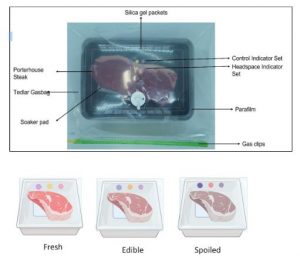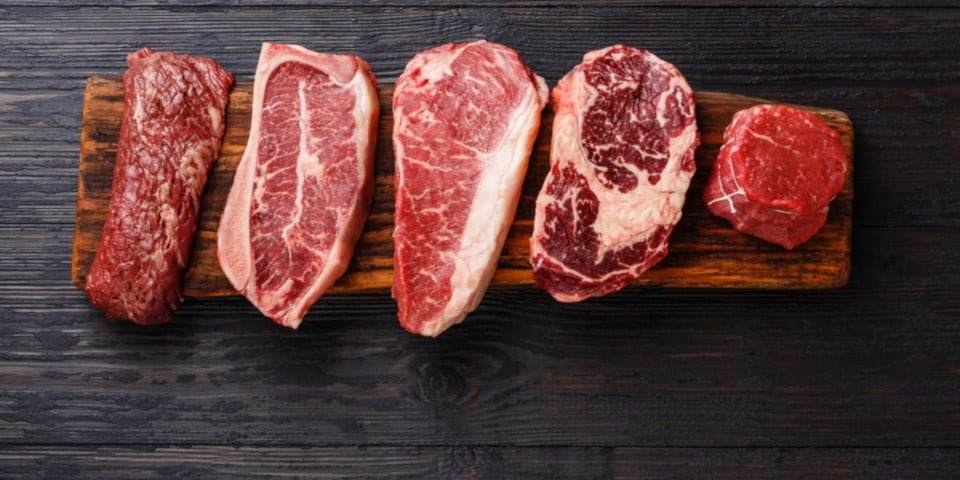Patches that change colour as raw meat freshness deteriorates in sealed refrigerated products could soon become a reality on supermarket shelves, making it easier for shoppers to know if it’s still good to eat and reducing food waste.
The innovative approach, developed by Monash researchers, uses on-pack colour indicators made from natural plant materials to show how fresh the beef is right at that moment and could be used to replace traditional ‘best before’ dates.
“Colour-changing indicators on the package are a way of giving consumers real time information that meat is still fit for consumption,” said Dr Joanne Tanner, of the Department of Chemical and Biological Engineering at Monash, who co-developed the patches.
“By contrast, a Best Before date merely represents a conservative estimate of how long the packaged meat will remain usable and is not an actual gauge of freshness. It is based on a series of worst-case assumptions about its handling and refrigeration through the supply chain.”
Dr Tanner said the colour indicator system could also be linked through smartphone apps to provide consumer advice, suggesting optimal ways to cook and prepare meat based on freshness.
“Smartphone integration providing advice on food preparation is a real possibility using this freshness indicator. For example, the meat could still be consumed but should be cooked for a longer period rather than eaten rare,” Dr Tanner said.
Machine-readable versions could also become a possibility helping to automate aspects of the supply chain and retailing, such as price discounting as freshness changes, and the technology is also likely to be extensible to other fresh foods.
 About the research
About the research
Using beef porterhouse steaks, the research demonstrated that when applied to the inside of transparent packaging film, the indicators consistently changed colour in response to rising pH levels caused by growth of bacteria such as E. coli.
It also showed that bacterial counts differed on steaks with the same best before date, further highlighting the value of an on-pack indicator.
Next steps in the research program will be to extend the findings by investigating a number of other anthocyanins that show colour changes across different pH ranges and may be suitable for different fresh foods.
The study, published in the journal Food Quality and Safety, was supported by Meat & Livestock Australia.

